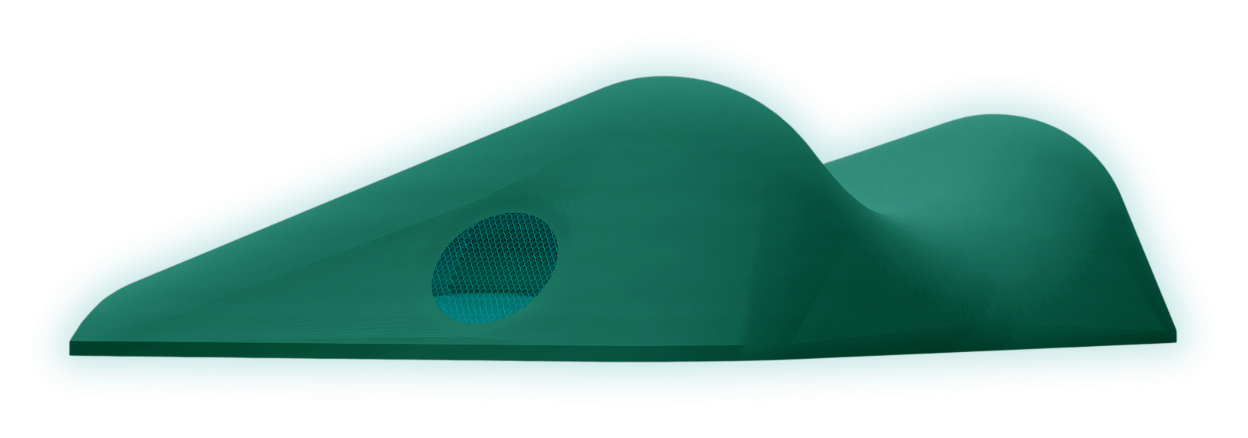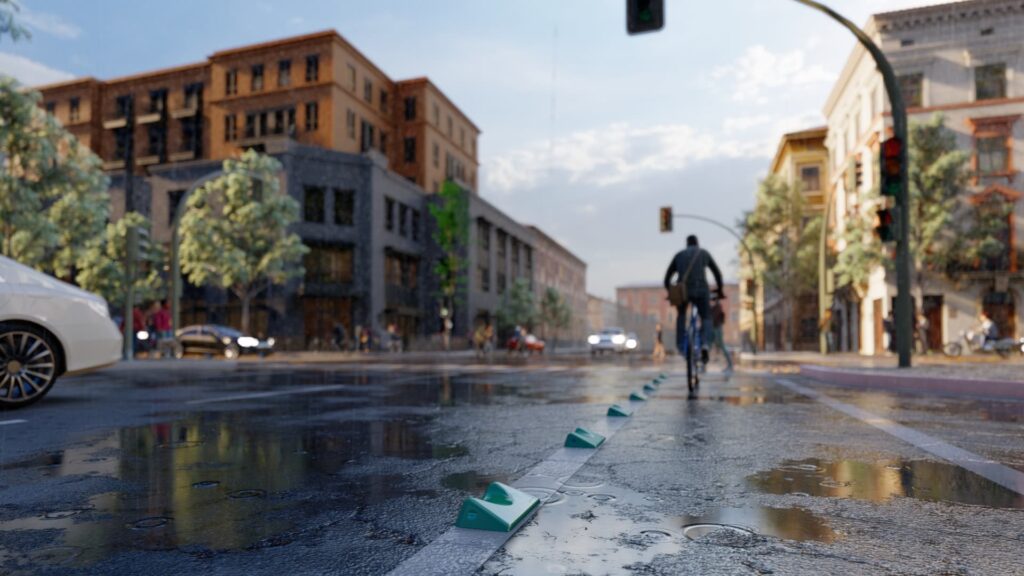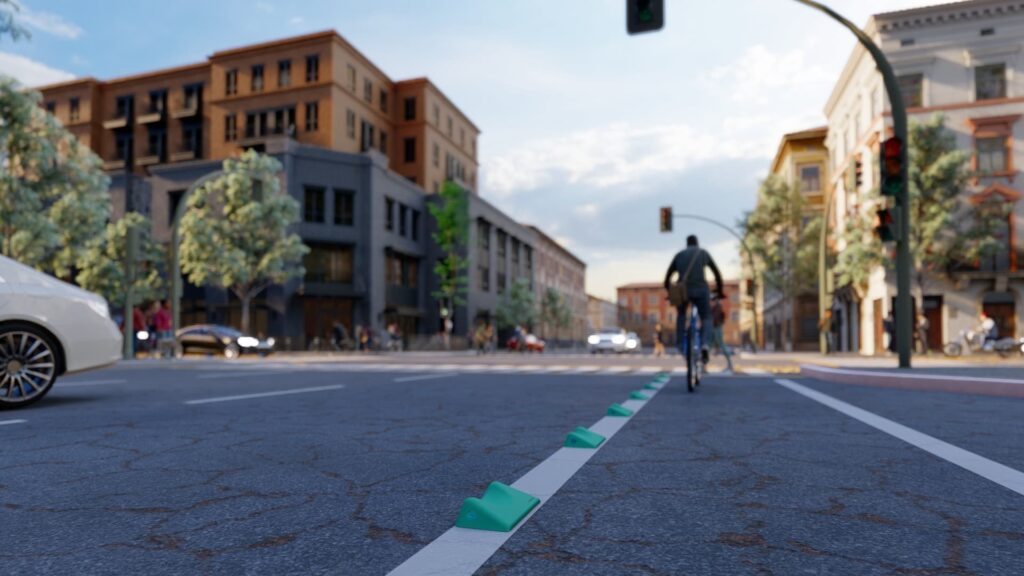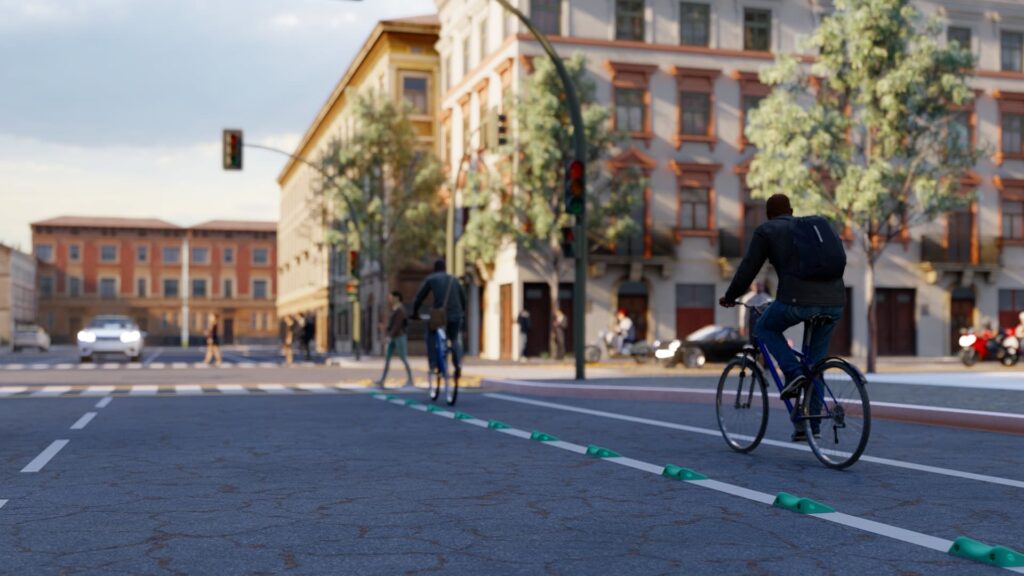The Future of Bike Lane Protection is Here.

Makes Every Bike Lane Safer.
The Anatomy of a Laneblock
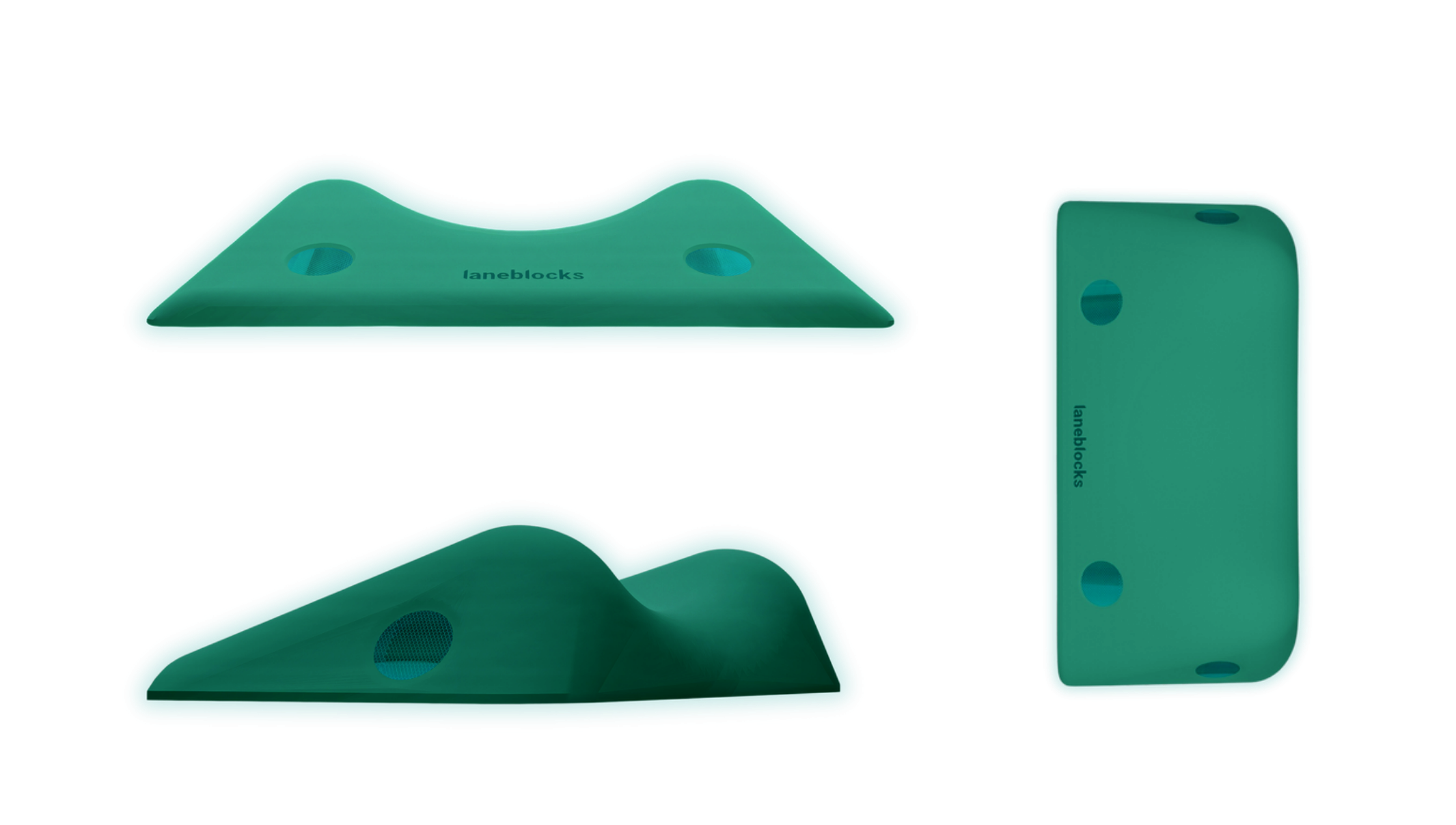
The bike-side face of Laneblocks is gently sloped to make any incidental contact gentle.
The car-side face of Laneblocks is nearly vertical, so cars more immediately aware of the impact.
Integrated retroreflective discs from 3M prismatic film make Laneblocks visible at all times.
Double hump design makes Laneblocks more visually intimidating to cars, but makes riding over them easier for bicycles.
Comes in Two Heights to Cross Intersections
Our flat top has the same footprint as our standard Laneblock, but is short enough it can cross driveways and intersections without impeding traffic. No other bike lane delineator can do this.

The flat top Laneblock maintains visual continuity but can be easily driven over. It’s great to indicate bike crossings so drivers know to be aware.
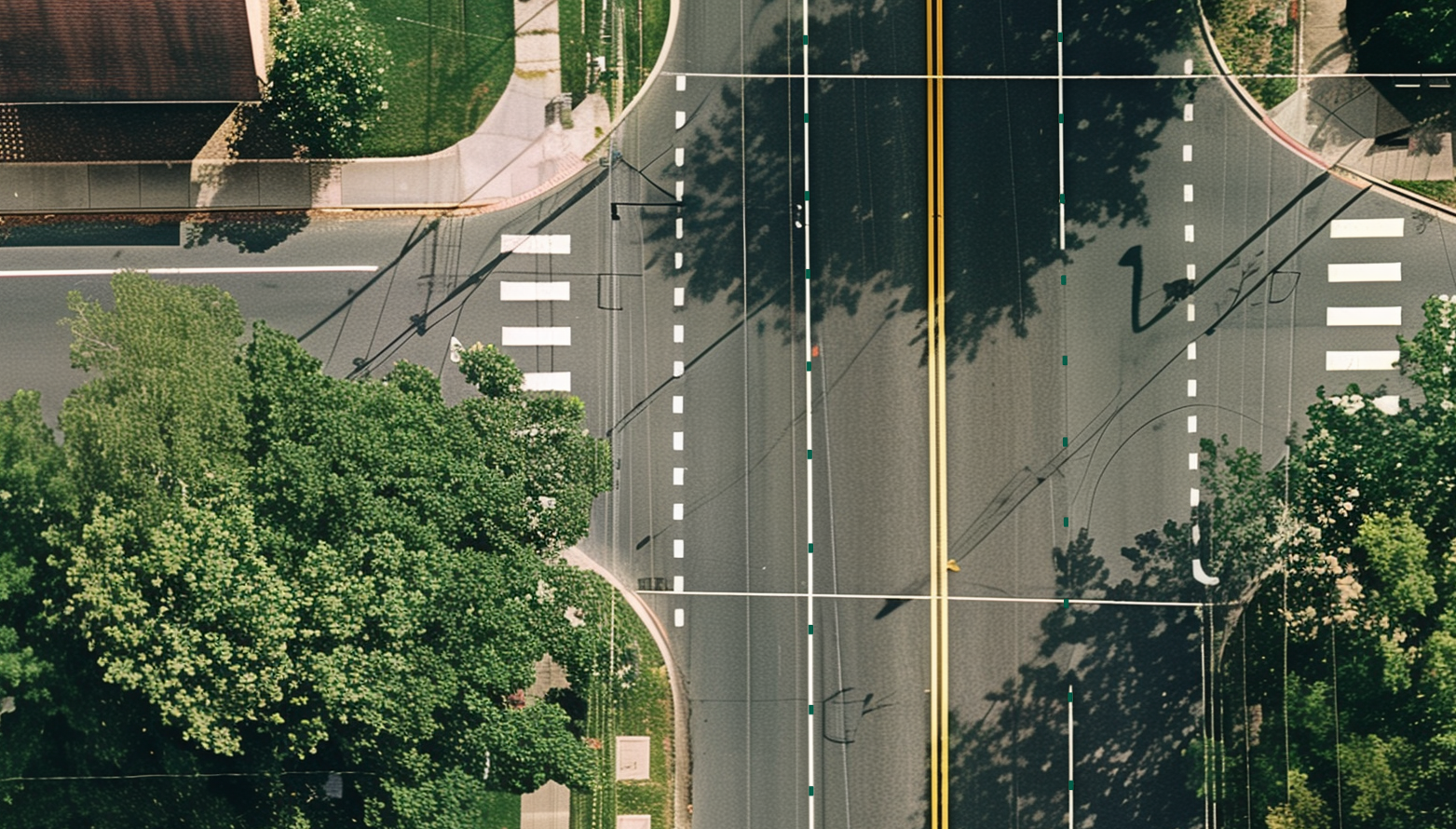
Laneblocks offers continuous buffering across intersections, parking spaces, and driveways..
As cars approach Laneblock lanes, they get a visible reminder that cyclists may be coming and introducing visual caution.
Laneblocks are the easiest way to protect bike lanes and make our streets safer.
-
Painted bike lanes alone are not sufficient to keep cyclists safe.
-
But existing bike lane delineators are too hard or expensive to install.
-
That’s why we made Laneblocks.
Real Protection
- Hard Barrier: Prevents cars from inadvertently drifting into lanes.
- Safer Turns: Forces wider right hand turns to limit rider cut-offs.
- Slower Speeds: Slows traffic by making the road feel narrower to cars.
Better Value
- Smart Design: Designed from the ground up to limit cost.
- No Middlemen: We sell direct to cities to eliminate markup.
- Low Maintenance: Laneblocks are designed to last without maintenance or repair.
Easy to Implement
- No engineering needed: Laneblocks don’t change the lateral width of streets.
- Works with street cleaners: Full-size street cleaners work with Laneblocks.
- Fits on lane stripe: Laneblocks fit within standard striping.
Customizable
- Custom Colors: We can match your colors to create routes or match city / college colors.
- Custom Shapes: On large orders we can modify shapes and sizes to fit a city’s use cases.
- Vertical Extensions: We offer options for more vertical protection.
Let’s get started.
Want to try Laneblocks?
- Get sample access for your city or organization.
- We’ll work with you to start with a test.
- We can support custom integrations.
- We look forward to hearing from you.
Shoot us an email at support@laneblocks.com and tell us about what you’d like to do. We’ll send you a free sample set of blocks and set up a brief call to discuss your project.
Frequently Asked Questions
Can I really just install them?
Yes! We want more protected bike lanes, so we made Laneblocks easy. They easily affix with 3mm butyl strips we can provide or via epoxy, and riders will immediately have a physical buffer between themselves and cars. Laneblocks are designed to fit on existing road designs without engineering.
How big are Laneblocks?
Each Laneblock is approximately 20 cm (8″) by 10 cm (4″) by 4 cm (1.5″) tall. They are easy for bicycles to ride over, but are very unpleasant to drive over. Since they are narrow, they can fit within a typical lane marking on a road, so they do not require additional lateral buffer.
While smaller than many other bike lane delineators, they are significantly less expensive and easier to install, so you can get more protected bike lanes more quickly.
Are you opposed to other bike lane delineators?
Absolutely not! We want more bike lane protection everywhere. And all other things being equal, more protection is better. We can and will build bigger blocks for cities that want them too!
But larger blocks create implementation challenges for cities that add costs and delay installation. Our aim with our standard Laneblock is to make it hard for various stakeholders to say “no.”
They are big enough to keep cars away, but small enough so that they avoid the logistical challenges of other solutions.
How far apart should Laneblocks be placed?
It depends on the road and the installation, but we generally recommend between 2 and 3 meters (6-10 feet). We have a flatter version that installs in front of driveways, parking lots, and streets to maintain visual continuity.
How much do Laneblocks cost?
The cost per Laneblock depends on the quantity ordered, but even at relatively small quantities they are less than $20 each. With volume, the cost per linear foot of protected should be less than $2, which is significantly less than other competing solutions. Plus, they are easy to install and don’t require lateral road redesigns.
How are Laneblocks installed?
We have two options. You can use the epoxy or adhesive of your choice to affix them to the road surface, or we can provide 3 mm butyl rubber strips for a small extra fee. The butyl strips are rated from -35 to 100 degrees celsius and should last for five plus years under normal conditions. Installation using butyl strips is very easy, so it is possible to do with a team of unskilled volunteers.
What colors do you offer?
We like “bike lane green” for US roads, but we can color match to many colors depending on your needs. We could, for example, match school or team colors if you’d like. Each Laneblock must be one color, and our reflector options are limited to a handful of colors, but we can make Laneblocks to fit any color choice.
How can I get started?
We are actively seeking partnerships right now. If you’d like early access reach out via the form on this page and we’ll connect. Let us know how you’d like to use them and feel free to include any questions you have.


